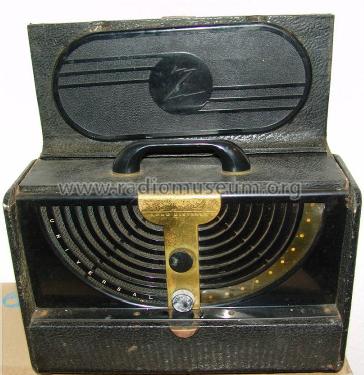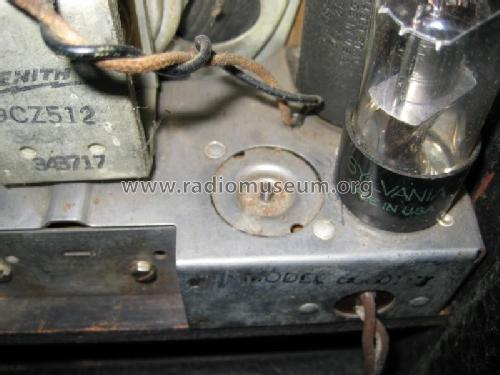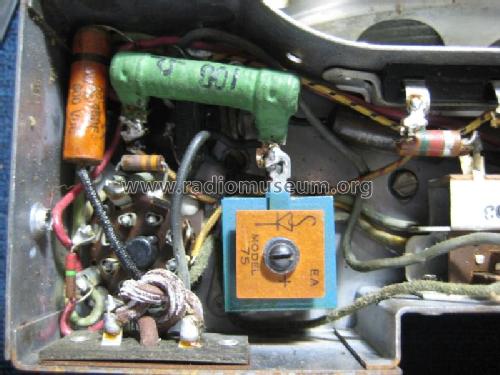6G001ZYX Universal
Zenith Radio Corp.; Chicago, IL
- Pays
- Etats-Unis
- Fabricant / Marque
- Zenith Radio Corp.; Chicago, IL
- Année
- 1947 ?
- Catégorie
- Radio - ou tuner d'après la guerre 1939-45
- Radiomuseum.org ID
- 241915
-
- alternative name: Chicago Radio Lab
- No. de tubes
- 6
- No. de transistors
- Semi-conducteurs
- Selenium-Rectifier
- Principe général
- Super hétérodyne avec étage HF; FI/IF 455 kHz
- Gammes d'ondes
- PO uniquement
- Tension / type courant
- Secteur et Piles (tous types).
- Haut-parleur
- HP dynamique à aimant permanent + bobine mobile
- Matière
- Boitier métallique
- De Radiomuseum.org
- Modèle: 6G001ZYX Universal - Zenith Radio Corp.; Chicago,
- Forme
- Portative > 20 cm (sans nécessité secteur)
- Remarques
-
Rectifier tube replaced by selenium rectifier.
Attention:
This 6G001ZYX is different from the 6G001YZX. How far they are common is not (yet) known.
- Auteur
- Modèle crée par Konrad Birkner † 12.08.2014. Voir les propositions de modification pour les contributeurs supplémentaires.
- D'autres Modèles
-
Vous pourrez trouver sous ce lien 4519 modèles d'appareils, 4111 avec des images et 3656 avec des schémas.
Tous les appareils de Zenith Radio Corp.; Chicago, IL
Collections
Le modèle 6G001ZYX Universal fait partie des collections des membres suivants.
Contributions du forum pour ce modèle: Zenith Radio Corp.;: 6G001ZYX Universal
Discussions: 1 | Publications: 5
Hello Radio Friends,
While going over the chassis of my 6G001YZX this weekend, I noticed something immediately; the lack of a 117Z6 rectifier tube and in its place is a selenium rectifier (SR). The tube socket is replaced with a metal plate, which appears to be factory work, and the SR is bolted to the underside of this plate. The SR is connected to a wire-wound 3 or 5 watt resistor (that is well cooked and the ceramic is broken, but the wire is not) which is connected to the 40 mfd electrolytic (7A). Since the resistor no longer bears any markings, I tested it around 155 ohms. That seems low to me, but I decided to stay in that vicinity and replaced the resistor with a 240 ohm 7 watt resistor. It immediately came back to life, with only the slightest hum (I have changed nothing else, yet), and a small bit of squealing when I adjust the volume (presumably from the SR). After 5 or 6 minutes, the new resistor was still cool enough to touch with my finger.
Is anyone familiar with this set and possibly know if this was something common for Zenith to do by 1946? I did not think selenium rectifiers were widely used on the 1950s?
Any other feedback from the far-more-experienced-group-than-I is also appreciated.
Bob
Bob Isaac, 19.Apr.10




